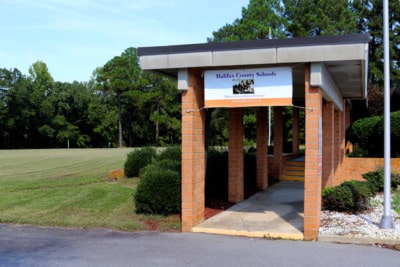
Update: 12:35 p.m. July 1: The North Carolina House passed the budget on third reading 91-22. The budget has now passed the General Assembly and moves on to the Governor.
Update: 6:00 p.m. June 30: The North Carolina House of Representatives passed the budget on second reading 92-23. The House will have its third and final reading July 1.
Update: The North Carolina Senate passed the budget compromise on third reading Wednesday. It moves now to the House.
The North Carolina Senate voted Tuesday to approve on second reading the budget compromise between its chamber and the state House of Representatives. A third reading is required before the budget is sent to the governor.
The priorities of this version of the budget reflect a compromise between the desires of the House and the Senate. It’s important to note that the budget being discussed in the General Assembly is a revision of a budget passed during the long session last year, rather than a brand new proposal. The extra amounts proposed are funds being spent above the already-budgeted amounts agreed upon last year.
The biggest attention getter is teacher pay. The Senate had originally proposed an average 6.5 percent pay increase for teachers, while the House was shooting for an average 4.1 percent increase. The compromise settles on an average 4.7 percent increase, which lawmakers say should bring the average salary for teachers to more than $50,150 in fiscal year 2016-17.
On administrator pay, the budget compromise improves upon the Senate’s original proposal to give a one-time bonus of $2,000 to principals and $500 to assistant principals. Instead of a one-time bonus, the compromise budget proposes a 1.5 percent annual recurring salary increase, and a .5 percent nonrecurring bonus. The House had originally wanted a 2 percent salary raise on the administrator salary schedule for principals and assistant principals.
The House and Senate fell in the middle of their mutual proposals for expanding funds for K-12 textbooks and digital materials. The House wanted to spend about an extra $12 million and the Senate wanted to spend only $9.2 million extra. The compromise puts the extra funding amount at an extra $10 million.
The principal preparation program was one line item where the Senate and House were far apart. The House wanted to provide an extra $7.5 million for the program, which would help train teachers who want to become principals. The Senate, on the other hand, wanted to eliminate the program altogether. In the compromise budget, the program will get an extra $3.5 million in recurring funds, for a total appropriation of $4.5 million.
On opportunity scholarships, the two chambers also had diverging priorities. The Senate wanted to provide funding for an additional 2,000 opportunity scholarships, starting in the year 2017-18. The Senate also wanted to raise the budget for the program by $10 million each year for 11 years, increasing funding from about $35 million appropriated in 2016-17, to almost $145 million in 2027-28 and each year after.
The House wanted to spend an extra $5.8 million in recurring funds for a 137 percent increase in funding of the special education opportunity scholarship program.
The House got its way in the compromise budget on special education opportunity scholarships, and the Senate got its way on regular opportunity scholarships.
The House’s originally proposed budget would make dramatic changes to the state’s performance grade scale. Currently, the scale is calculated using a formula that puts the emphasis on school achievement (80 percent), rather than school growth (20 percent). The House wanted to change that to a 50-50 split, as well as solidify in perpetuity the 15-point grading scale that has been in effect up until this point. The Senate wanted to keep the 80-20 formula, and move the grading scale to a 10-point scale. The compromise budget keeps the 80-20 split but keeps the 15-point grading scale for the next 10 years.
Other points of interest
The compromise budget mandates class sizes for kindergarten through 3rd grade as follows:
- Kindergarten: One teacher per 18 students
- First grade: One teacher per 16 students
- Second grade: One teacher per 17 students
- Third grade: One students per 17 students
The budget cuts funding for central office administration in districts by 2.6 percent — a total $2.5 million cut in recurring funds.This is money used for the salary and benefits of district administrators, including superintendents, assistants superintendents, and finance officers. With the cut, the revised appropriation for central office administration is $92.6 million.
The compromise budget also maintains the acceptable withdrawal rate for the state’s Virtual Charter Schools at 25 percent, though with some restrictions on which students can be considered to have withdrawn. Lawmakers in the House had attempted to move the rate up to 35 percent, but failed.
The compromise budget also includes the House proposal to conduct a Joint Legislative Study Committee on Principal Pay. The House, in a series of committee meetings prior to the start of the short session, periodically discussed problems with the principal salary schedule, something we reported on extensively in 2015. The study committee would seek solutions to those problems.
The compromise budget calls for the establishment of “lab schools” focused on teacher and principal preparation. Eight UNC-system institutions would be picked to create these lab schools, which would attempt to improve student performance in district low-performing schools while also training teachers and principals to better handle issues associated with a low-performing student populations.
These are highlights from the budget compromise. Check out the bill and the money report for more details.
Read our previous articles and listen to a podcast on the originally proposed House budget here, here and here. Read our coverage of the Senate proposal here. And here is a comparison of the budget proposals originally introduced by the governor, the House, and the Senate.


